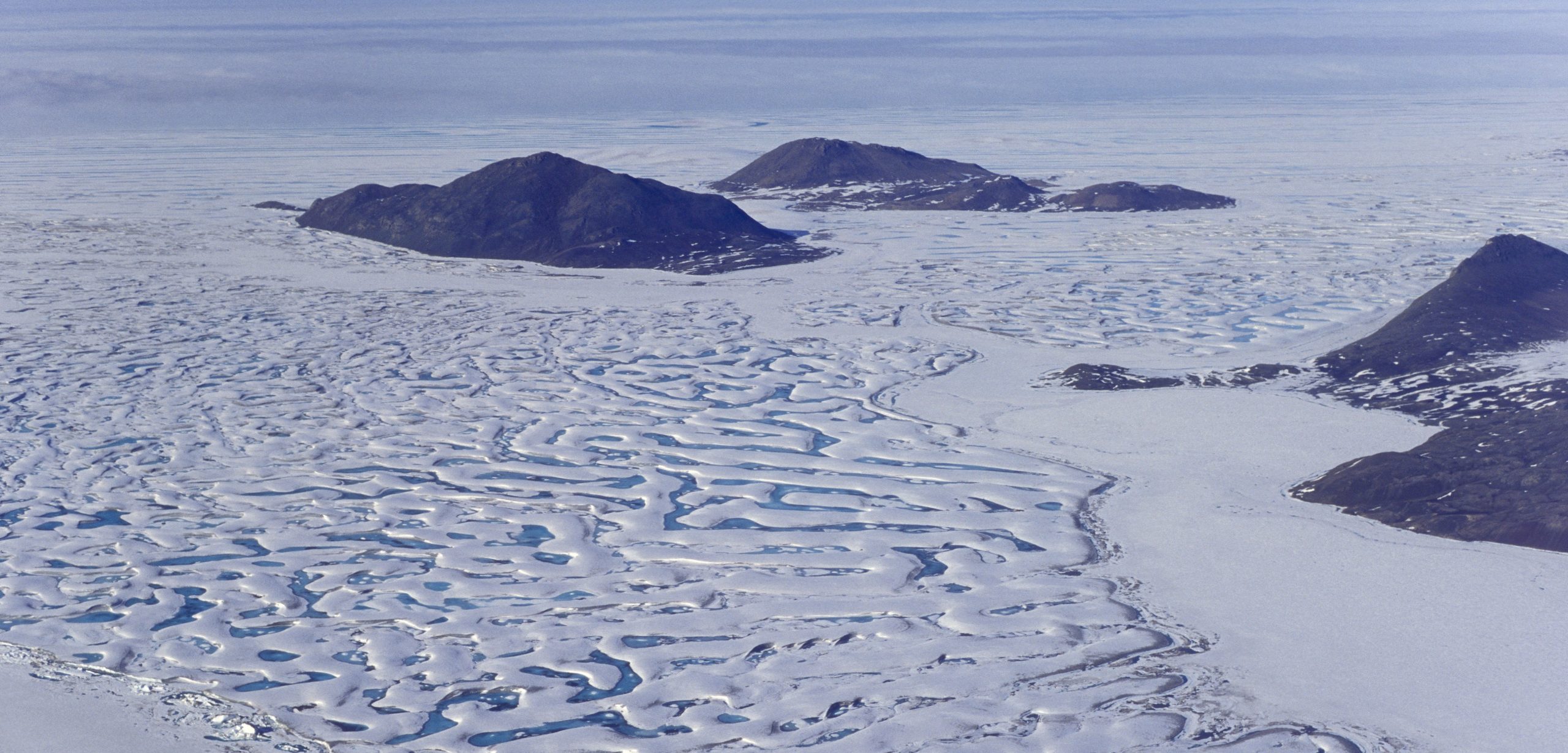Epishelf Lakes: an Ecosystem Facing Extinction
A mysterious Arctic ecosystem that scientists barely understand is about to disappear forever.
Article body copy
Once upon a time, northern Canada harbored a remarkable kind of freshwater lake, a distinct glacial environment found nowhere else in the Northern Hemisphere. In these special freshwater lakes, known as epishelf lakes, life thrived, effectively cut off from the rest of the world. Many of these hidden lakes formed between 4,000 and 800 years ago. But now there’s just one left, and it won’t last long.
“I would be surprised if the lake lasted for more than a decade,” says physical geographer Derek Mueller. “It could go really at any time.”
Epishelf lakes form when meltwater flowing off a glacier is trapped behind a floating ice shelf. On the lake’s surface, an icy lid forms, sealing it off from the air. At its base, the trapped freshwater remains separated from the dense saltwater below—like the layers of a tequila sunrise. Epishelf lakes can be big: the largest, in Disraeli Fjord, contained four cubic kilometers of water, two-thirds more volume than Mount Everest.
There used to be as many as 17 epishelf lakes on the northern coast of Canada’s Ellesmere Island—before that ice shelf broke up over the course of the 20th century. By 1960, that ice shelf had just nine lakes left. Over the years, lakes would suddenly drain or lose their dam. Today, there is one lone epishelf lake: the Milne ice-dammed lake. The lake is growing shallower, and possibly saltier, as the ice around it melts.
In 2011, when researchers studied the Milne ice-dammed lake, they found an entire ecosystem. The lake was brimming with diatoms and other creatures untouched by human hands—like a northern Lake Vostok.
But the Milne epishelf lake, like all the others, is doomed.
“If the ice shelf that is holding it in place disintegrates, the lake will dissipate and mix with the ocean,” says Mueller. And the life that thrives in this unique environment? “Those species would probably not survive.”
“Certainly all the freshwater species are dependent on the lake’s presence,” says Mueller.
Losing the ice shelves—and their epishelf lakes—is just one consequence of climate change in the Canadian Arctic.
“It’s sad to see the changes, in some respects, but also exciting to find out what will happen and what the new reality will be like,” says Mueller. “We have a special opportunity to understand what is happening in this period of transition.”
In the midst of this change, Mueller and his colleagues are trying to find the time and money to study Canada’s last epishelf lake. But the fact remains, he says, that most of the work will never get done. Soon, Canada’s epishelf lakes, and the mysteries they hold, will be gone for good.

